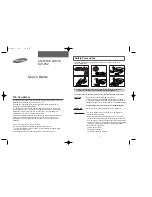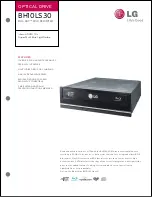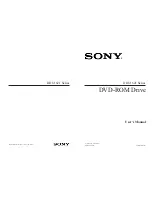
OPERATION
Control Options
66
Standard Operation with an Automated Control System
In many VFD applications, including ventilation, water supply, or irrigation, motor speed is often determined
by an automated system such as a BAS, BMS, or PLC. These systems provide control information to the VFD
either through a communications protocol such as Modbus or BACnet, or through direct electrical connec
-
tion to one of the analog input terminals.
When the drive is in
AUTO
mode, it runs the motor at a variable frequency based on information from the
automation system through the input selected in
Auto Speed Ref [SET–07]
.
Standard Operation with PID Feedback Control
A PID controlled application, such as a fan system or a constant pressure pump system, uses feedback from
a transducer to measure system performance against a user defined Setpoint (target) to control motor
speed. The VFD can use several types of measurement, including pressure, flow, level, air volume, tempera
-
ture, speed, etc.
For example:
•
In a pumping application, the default measurement unit is
PSI
. As user demand (flow) causes pressure
changes, the drive varies the output frequency (motor speed) to maintain pressure at the target set
-
point. When the drive determines a no-demand condition, it enters Sleep mode and stops the motor.
•
In a fan application, the default measurement unit is
inWC
(air pressure).
When the drive is in
AUTO
mode, it runs the motor at a variable frequency based on a comparison between
the
PID Setpoint [SET–21]
and feedback from the PID transducer, up to the
PID Hi Hz Limit [SET–23]
. PID operation is
disabled in
HAND
mode.
When basic setup is complete, including motor specifications, verify or set the following parameters for PID
operation:
Auto Speed Ref [SET–07]:
This should be set to
PID Output
.
Auto Run Command [SET–08]:
Select source of Run Command, either Keypad or external. If using a Digital
Input (M1-8) with a switch, set the terminal to
FWD
(or
REV
)
[IO–21 ~ 28]
.
PID Mode [SET–17]:
Set to
PID Direct
for most PID operations (exceptions are noted in the tables).
Feedback Source [SET–18]:
Set to the terminal used for transducer connection. Make sure impedance is set
correctly.
PID Feedback Units [SET–19]:
Set to the appropriate measurement unit for the transducer type.
PID Feedback Max [SET–20]:
Set to the maximum rating of the transducer.
PID Setpoint [SET–21]:
Set to the desired measurement target.
Sleep Mode [SET–26]:
This should be enabled for most pump applications, and
Disabled
for most HVAC
applications.
PID P-Gain [SET–24]:
Proportional Gain controls motor speed adjustments based on the proportional dif
-
ference between the PID setpoint and PID feedback. Higher settings result in faster response. However, if
the value is too high, it may cause system oscillation and instability.
Used along with PID I-TIme [SET-25] to
smooth and balance system response.
PID I Time [SET–25]:
Integral Time determines PID response time. Lower values increase system response
to the feedback signal, which reduces overshoot, but may cause system oscillation if set too low. Greater
values provide slower response, which may cause overshoot of the setpoint and oscillation of output fre
-
quency.
Содержание Cerus X-Drive
Страница 1: ...franklin electric com ENGLISH EN CERUSX DRIVE Installation and Operation Manual Firmware Version 1 1 ...
Страница 2: ......
Страница 3: ...CERUS X DRIVE INSTALLATION AND OPERATION MANUAL Firmware Version 1 1 Franklin Electric Co Inc ...
Страница 94: ...COMMUNICATIONS BACnet Communication 94 ...
Страница 98: ...ACCESSORIES Optional Extension Cards 98 Frame D Frame E Frame F ...
Страница 99: ...ACCESSORIES Optional Extension Cards 99 Frame G Frame H ...
Страница 102: ...ACCESSORIES Optional Extension Cards 102 ...
















































